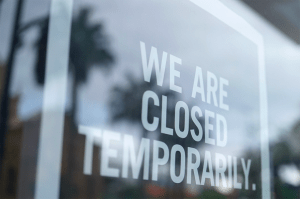The economy is in a recession. Interest rates are going up. Inflation is rising. There’s a labor shortage. (And, materials are still not readily available.) The list can go on and on and on. What’s even worse, is there are business owners actually do go on and on. They complain about this, that, and the other thing. Some even take it to the next level and complain about things that haven’t even happened yet. Then, although somewhat rare, there are entrepreneurs out there who go so far as to put their gripes and grievances on social media. This doesn’t paint a very positive picture and of course, it does absolutely nothing to correct what is perceived to be or is wrong. In reality, it does far more harm than it does through catharsis. So, if you’re guilty of this extremely unattractive behavior it’s time to stop, and here’s why.
So, what should you do when something bothers you and you’re dealing with a customer at that time? Well, the first suggestion is to ignore or resist your instinct to interject complaints and bite your tongue. If you’re able to put it off for a little while, you’ll be able to vent to the right people in an appropriate setting.
Should your personality be one that says it’s best to be honest with everyone and use that excuse as a justification, think twice before you start blurting out complaints. Ask yourself what would you think if you were the customer hearing this? Merely putting yourself in your customers’ shoes ought to be enough to dissuade you from griping. At the very least, it will give you pause to adjust your attitude.
It’s also helpful to remember that complaining doesn’t solve anything. Yes, it does allow you to get something that’s bothering you off your chest, but that’s not usually worth the ultimate cost. Remember that it is not an attractive or trustworthy trait and you’ll do yourself a huge favor.
What other advice would you give business owners who have a bad habit of complaining to customers? Please share your own thoughts and experiences so others can benefit from your input!
Interested in learning more about business? Then just visit Waters Business Consulting Group.
The Internet is Forever
All right, very few business owners actually do complain over the internet but where it’s mostly found is social media. Regardless of the digital property, the internet is forever, meaning that once it is out there, it’s usually not possible to take it back. Even if you’re able to delete it, you’ve already left a negative impression.We sometimes deny that we’re complaining. Instead, we say that we’re just “being honest,” “venting” or “blowing off steam.” But don’t kid yourself: Whenever you insert negative feelings into a conversation without some sort of resolution, you’re complaining. It’s tempting because there is a lot about entrepreneurship to complain about —Entrepreneur.comThen, there’s something else to keep in mind. Business owners don’t need to be the ones writing complaints about this or that on the web. Dissatisfied customers will do that instead (and probably with good reason). In other words, if you complain to your customers or in front of them, there’s a good chance they’ll share that experience and that isn’t good for your business’s public reputation.
Instead of Complaining, Do the Following
Everyone is guilty and capable of letting their complaints be known. But for business owners, this is a very bad choice with no real upside. Whether you’re complaining about a problematic customer, an inhospitable vendor, or your bank charging petty nickel and dime fees, you’re still doing it with negative emotion. Sure, people will understand your frustration, but customers really don’t want to hear about it or even care.So, what should you do when something bothers you and you’re dealing with a customer at that time? Well, the first suggestion is to ignore or resist your instinct to interject complaints and bite your tongue. If you’re able to put it off for a little while, you’ll be able to vent to the right people in an appropriate setting.
Should your personality be one that says it’s best to be honest with everyone and use that excuse as a justification, think twice before you start blurting out complaints. Ask yourself what would you think if you were the customer hearing this? Merely putting yourself in your customers’ shoes ought to be enough to dissuade you from griping. At the very least, it will give you pause to adjust your attitude.
It’s also helpful to remember that complaining doesn’t solve anything. Yes, it does allow you to get something that’s bothering you off your chest, but that’s not usually worth the ultimate cost. Remember that it is not an attractive or trustworthy trait and you’ll do yourself a huge favor.
What other advice would you give business owners who have a bad habit of complaining to customers? Please share your own thoughts and experiences so others can benefit from your input!
Interested in learning more about business? Then just visit Waters Business Consulting Group.




